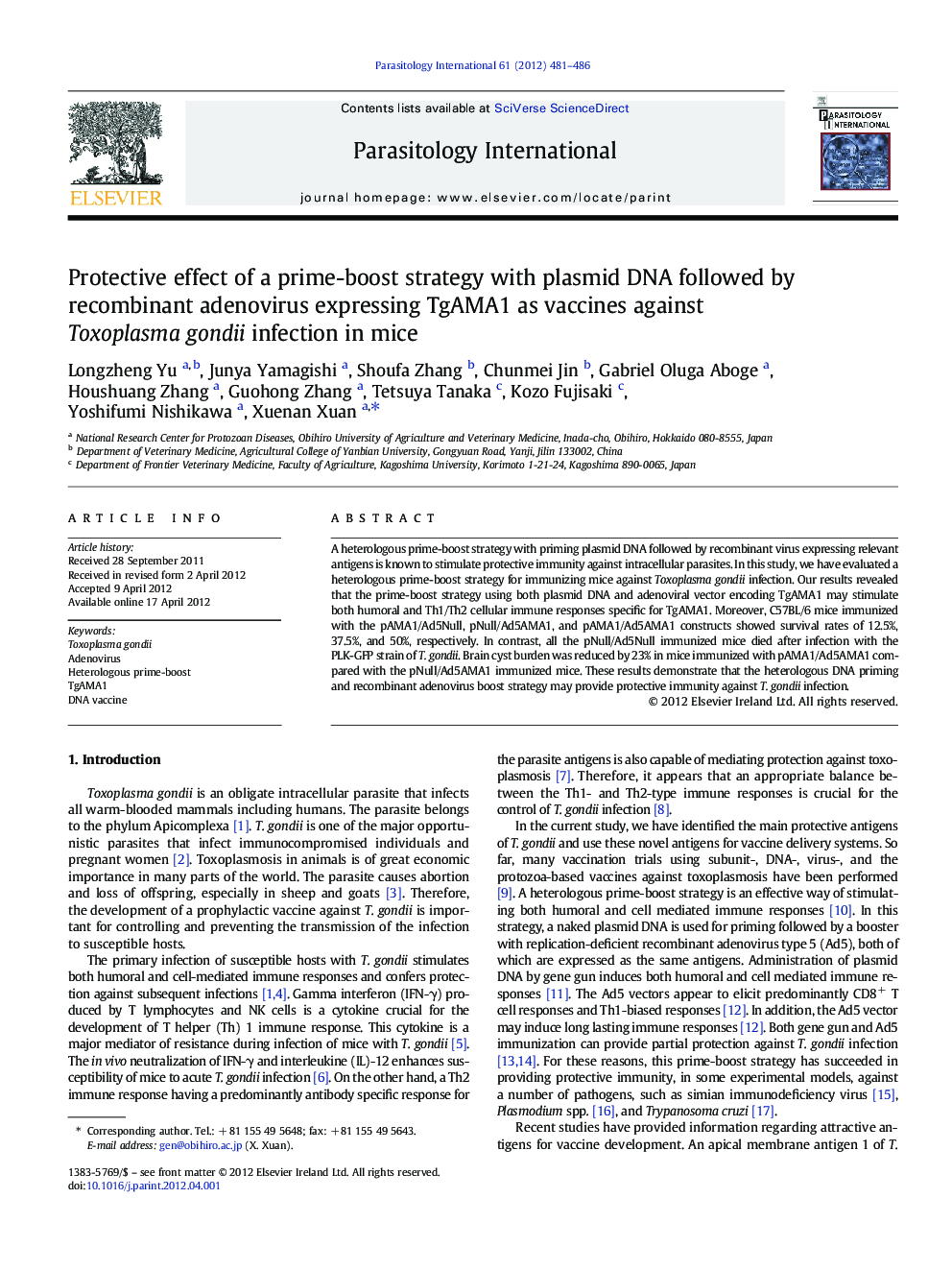| Article ID | Journal | Published Year | Pages | File Type |
|---|---|---|---|---|
| 3418069 | Parasitology International | 2012 | 6 Pages |
A heterologous prime-boost strategy with priming plasmid DNA followed by recombinant virus expressing relevant antigens is known to stimulate protective immunity against intracellular parasites. In this study, we have evaluated a heterologous prime-boost strategy for immunizing mice against Toxoplasma gondii infection. Our results revealed that the prime-boost strategy using both plasmid DNA and adenoviral vector encoding TgAMA1 may stimulate both humoral and Th1/Th2 cellular immune responses specific for TgAMA1. Moreover, C57BL/6 mice immunized with the pAMA1/Ad5Null, pNull/Ad5AMA1, and pAMA1/Ad5AMA1 constructs showed survival rates of 12.5%, 37.5%, and 50%, respectively. In contrast, all the pNull/Ad5Null immunized mice died after infection with the PLK-GFP strain of T. gondii. Brain cyst burden was reduced by 23% in mice immunized with pAMA1/Ad5AMA1 compared with the pNull/Ad5AMA1 immunized mice. These results demonstrate that the heterologous DNA priming and recombinant adenovirus boost strategy may provide protective immunity against T. gondii infection.
Graphical abstractFigure optionsDownload full-size imageDownload as PowerPoint slideHighlights► A prime-boost strategy with plasmid DNA and adenovirus encoding TgAMA1 was evaluated. ► The prime-boost strategy may stimulate both humoral and Th1/Th2 cellular responses. ► The prime-boost strategy may provide protective immunity against T. gondii infection.
